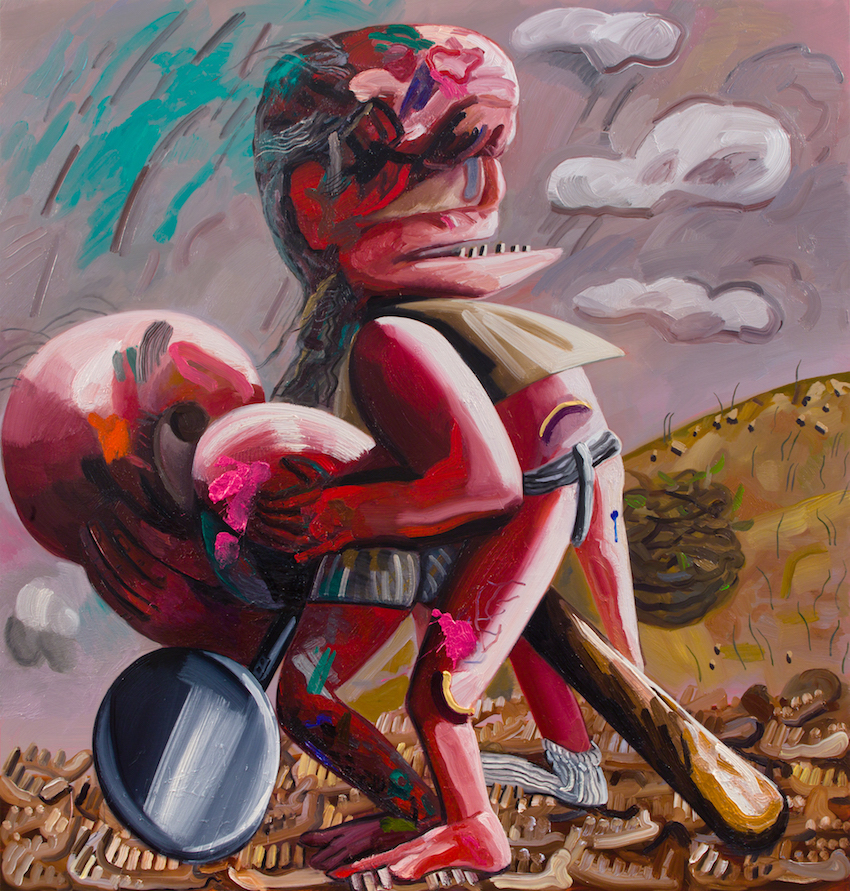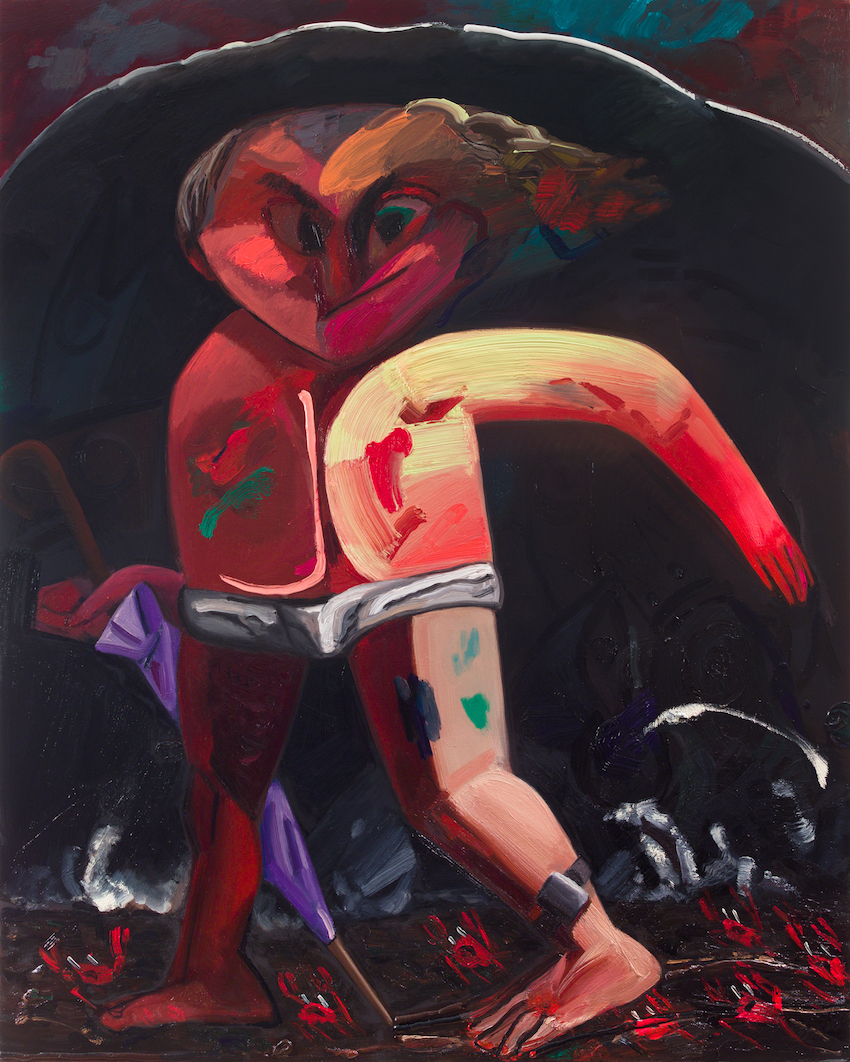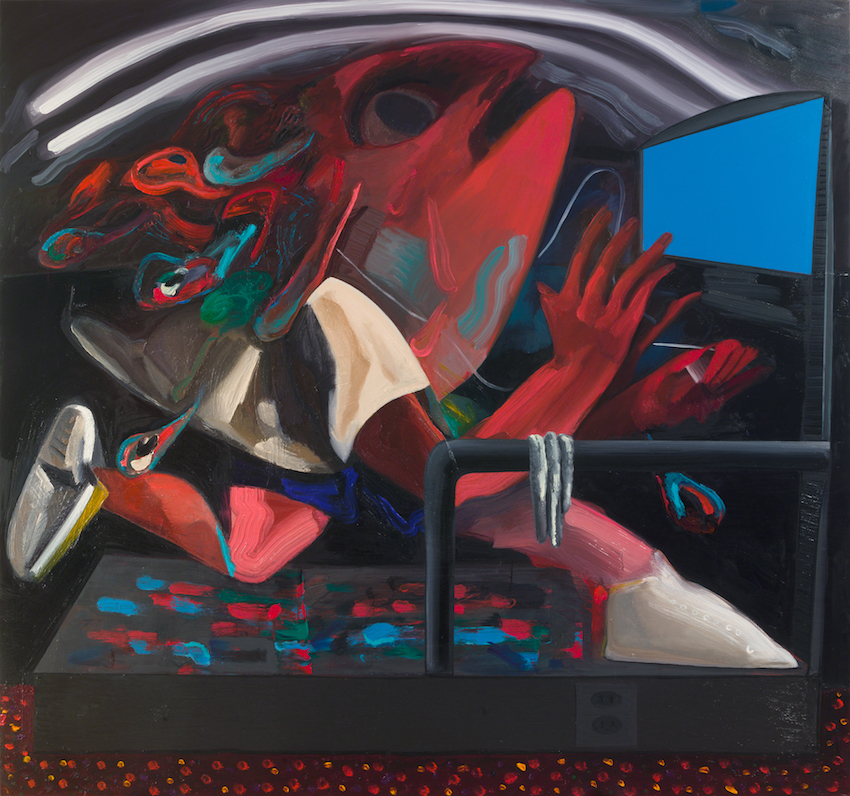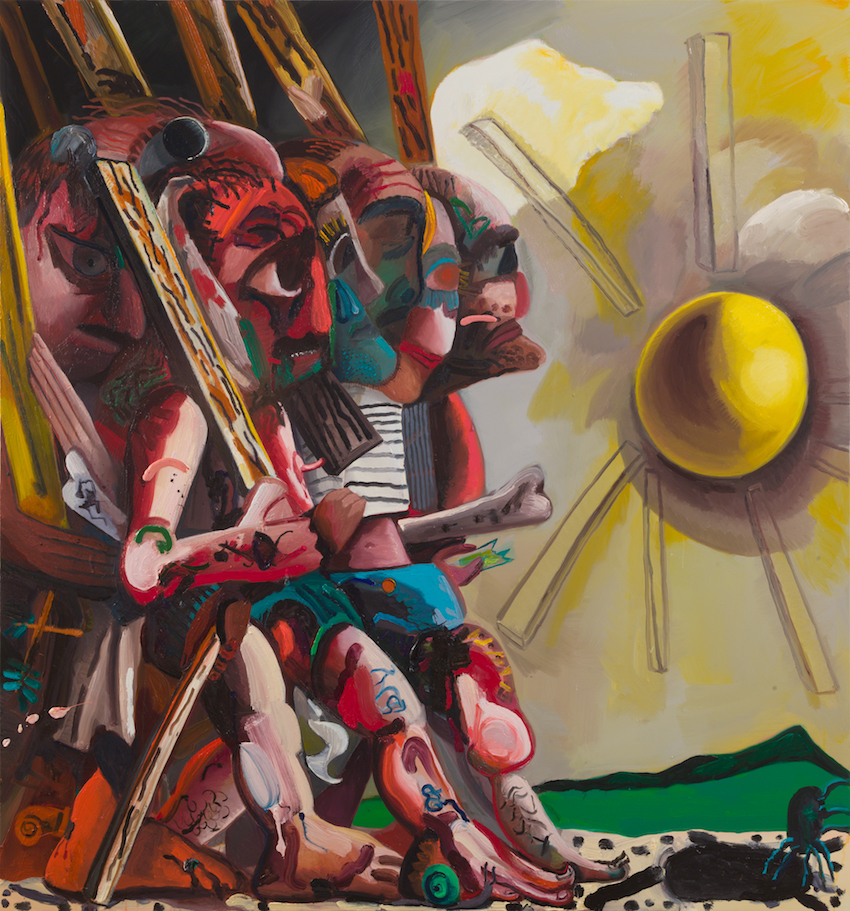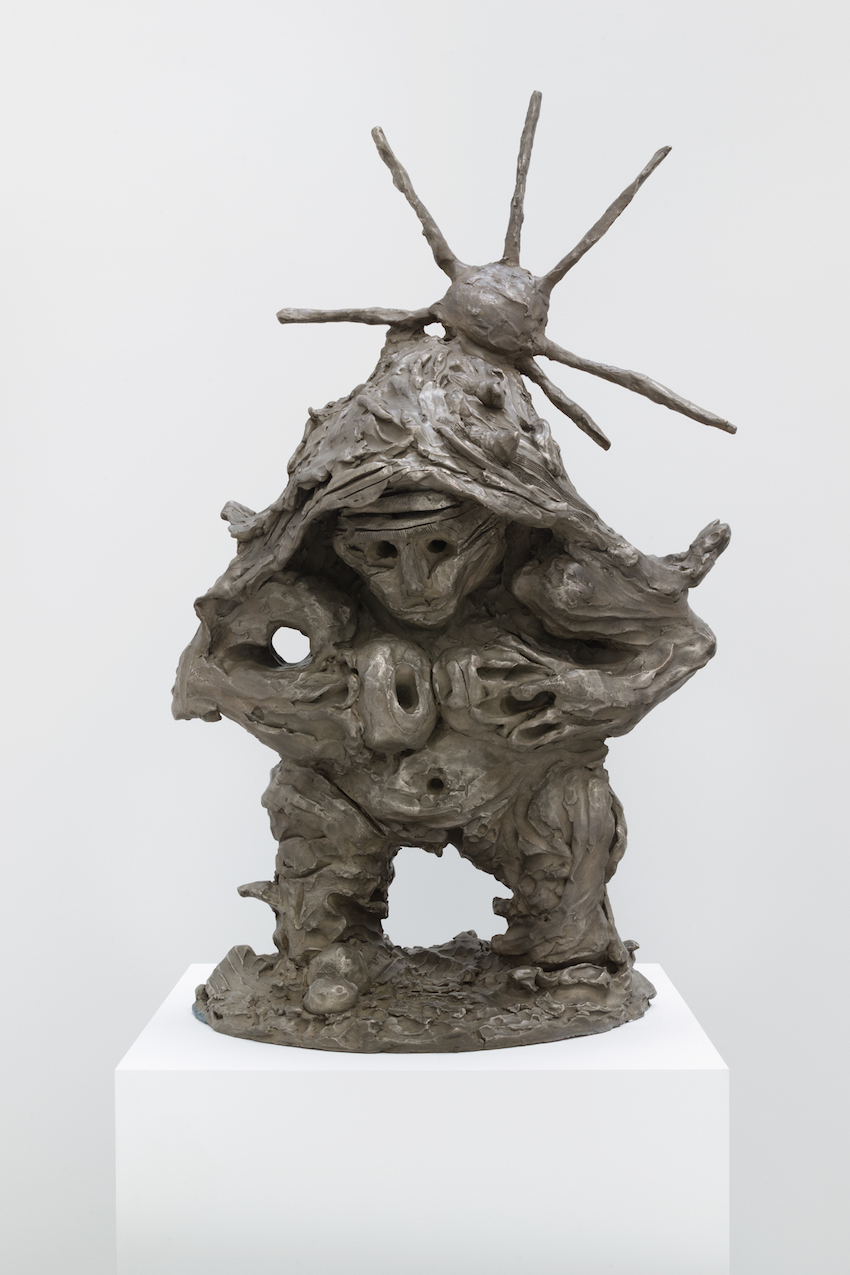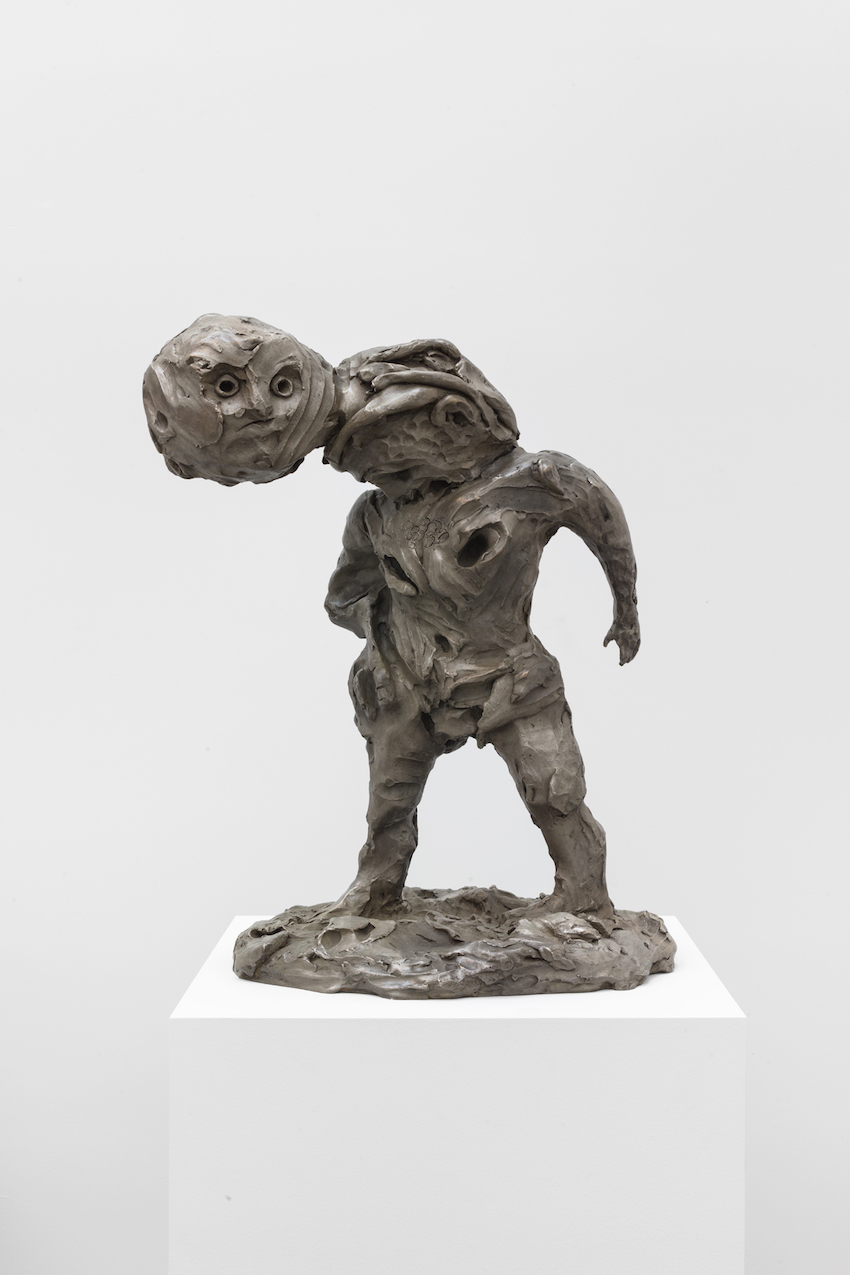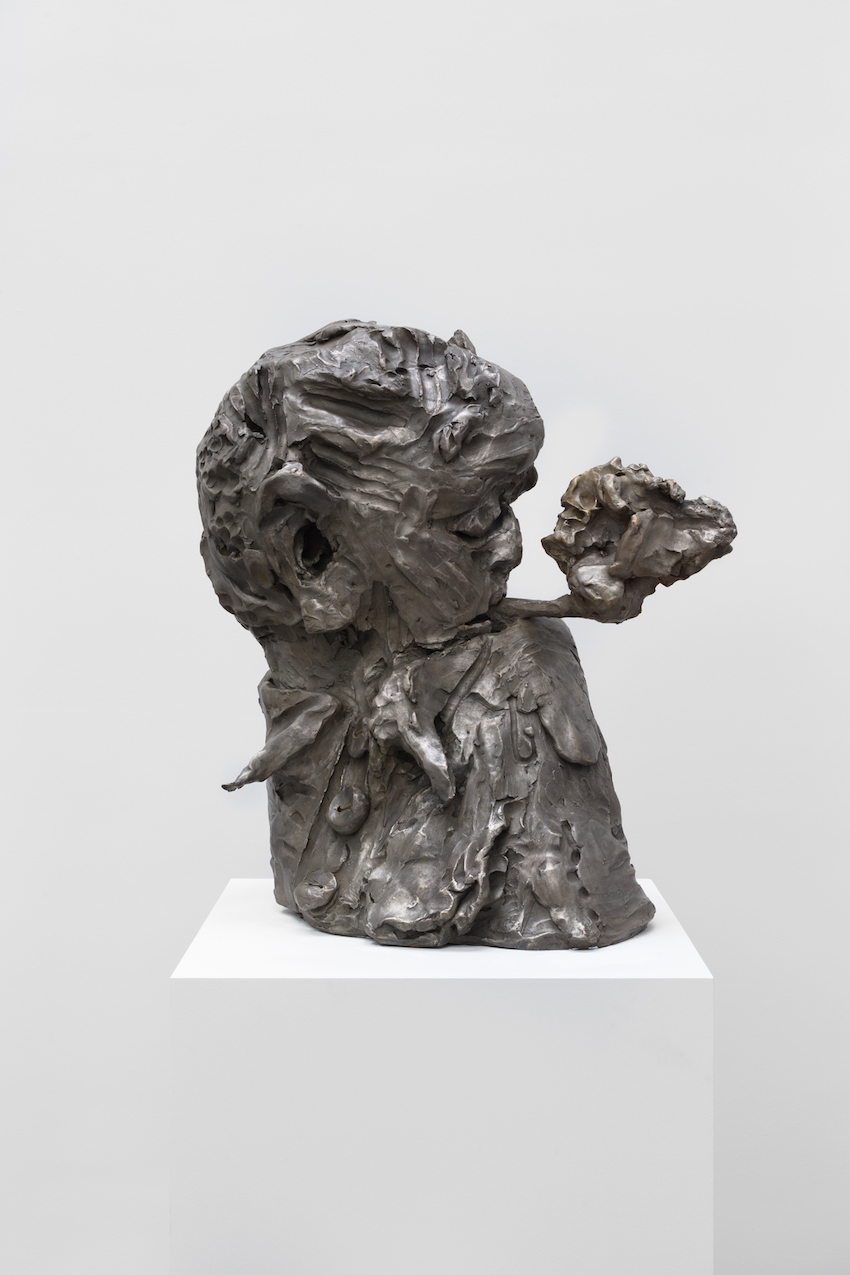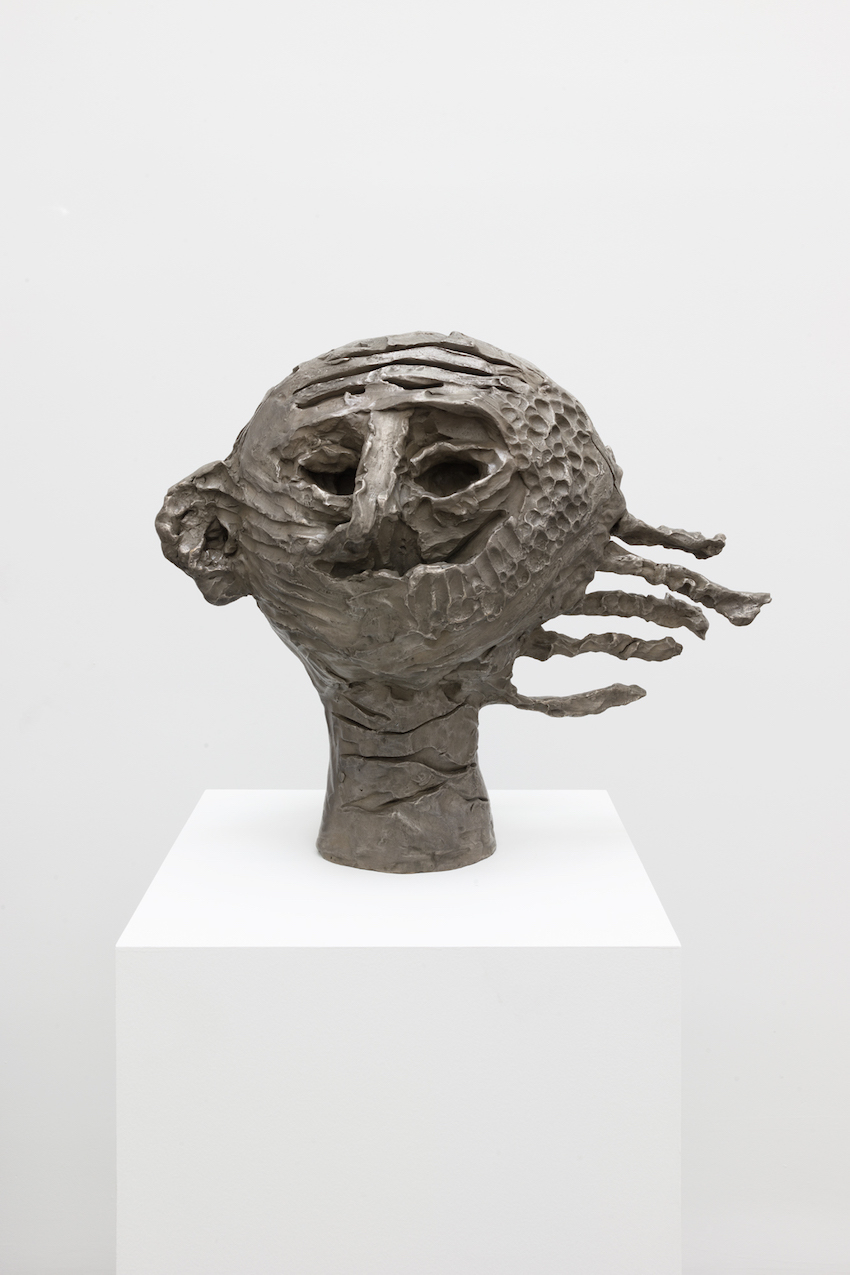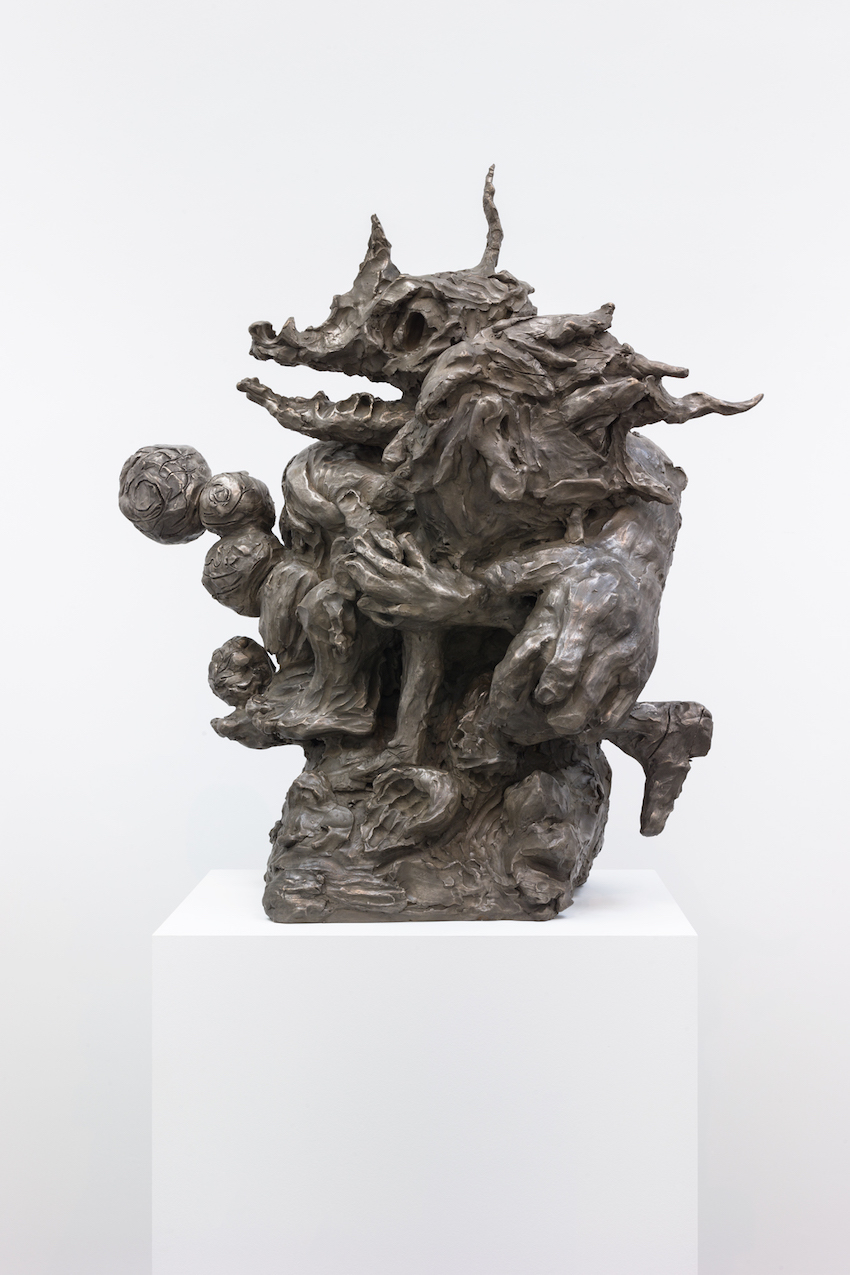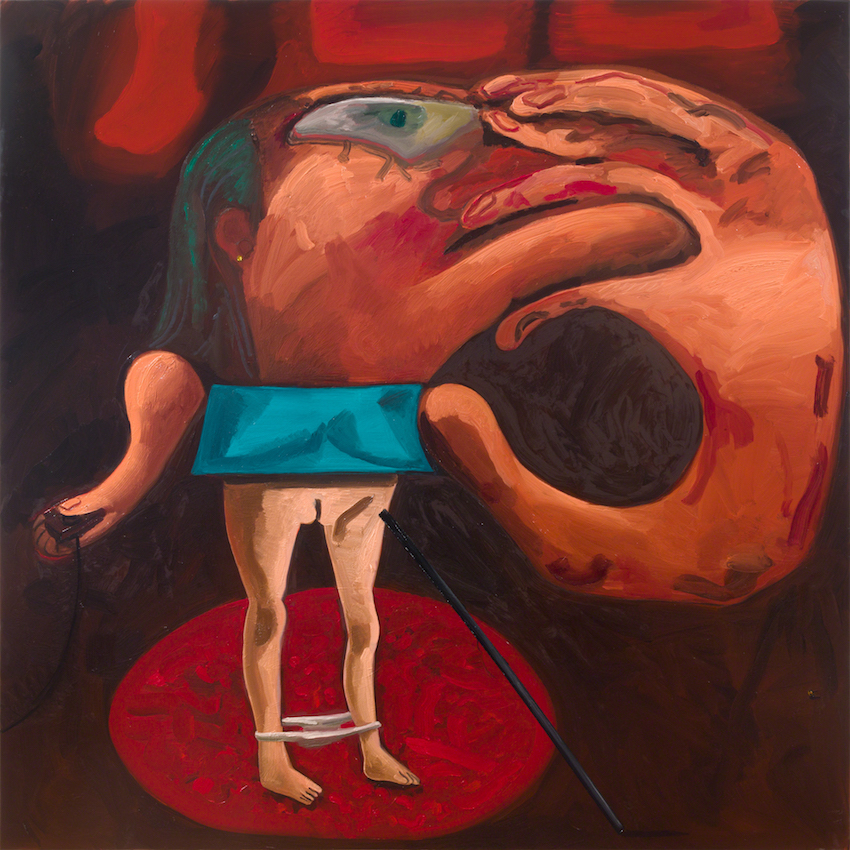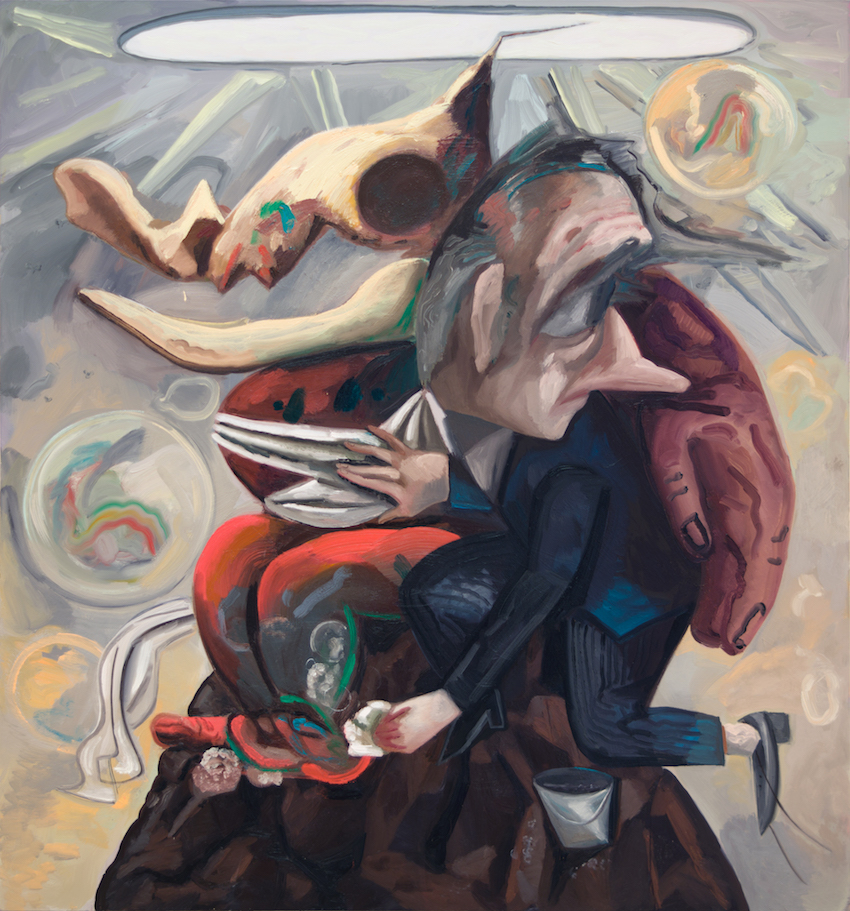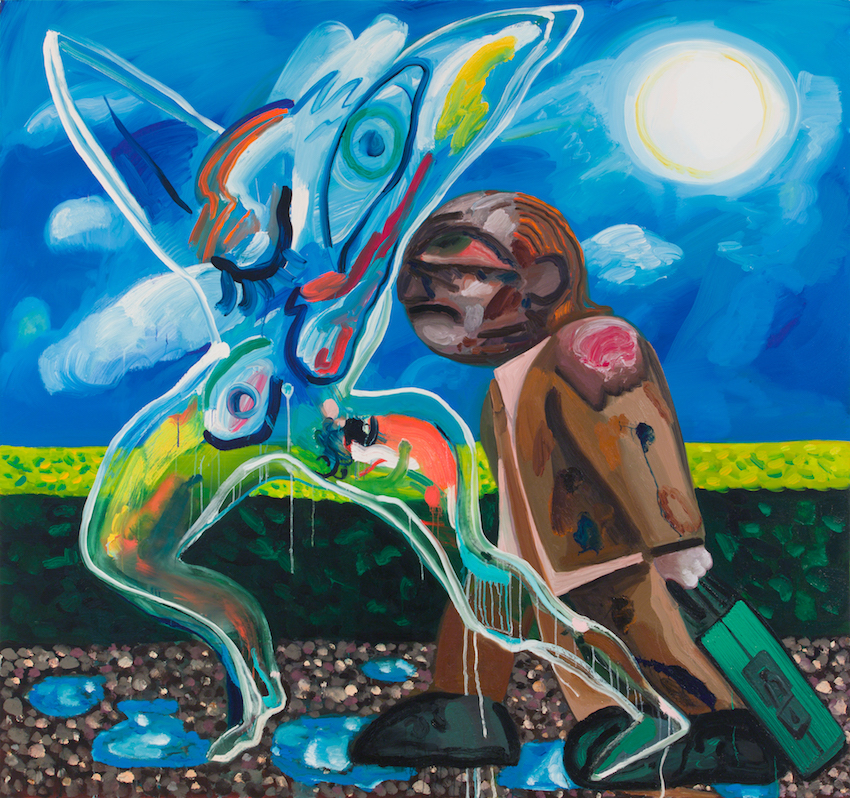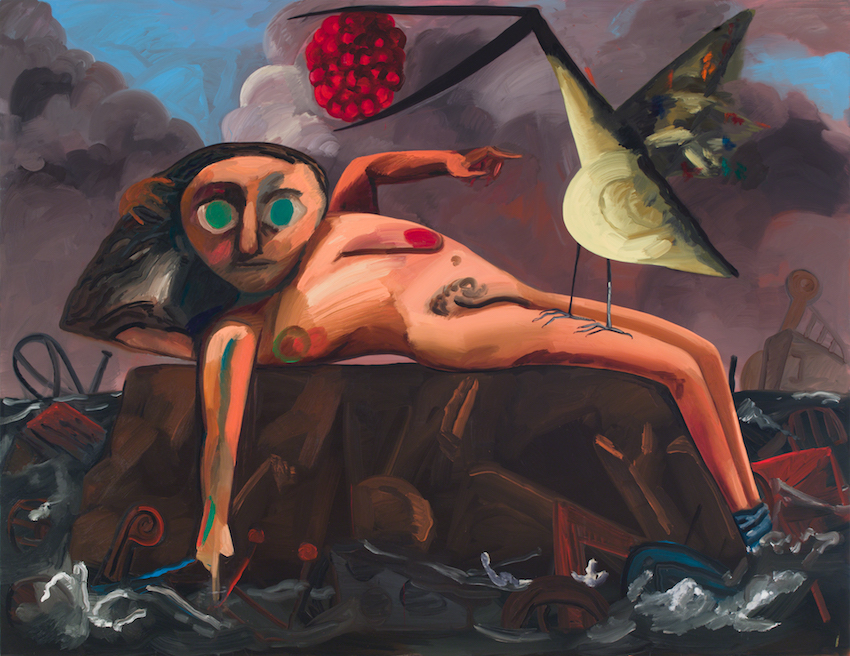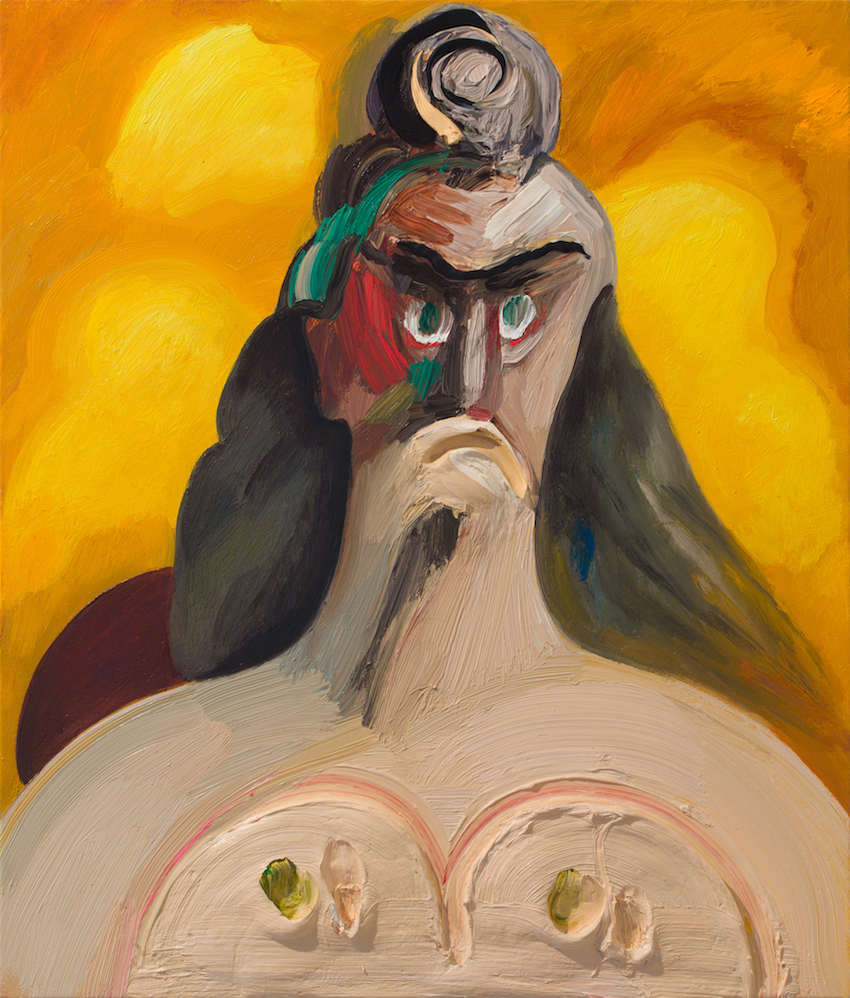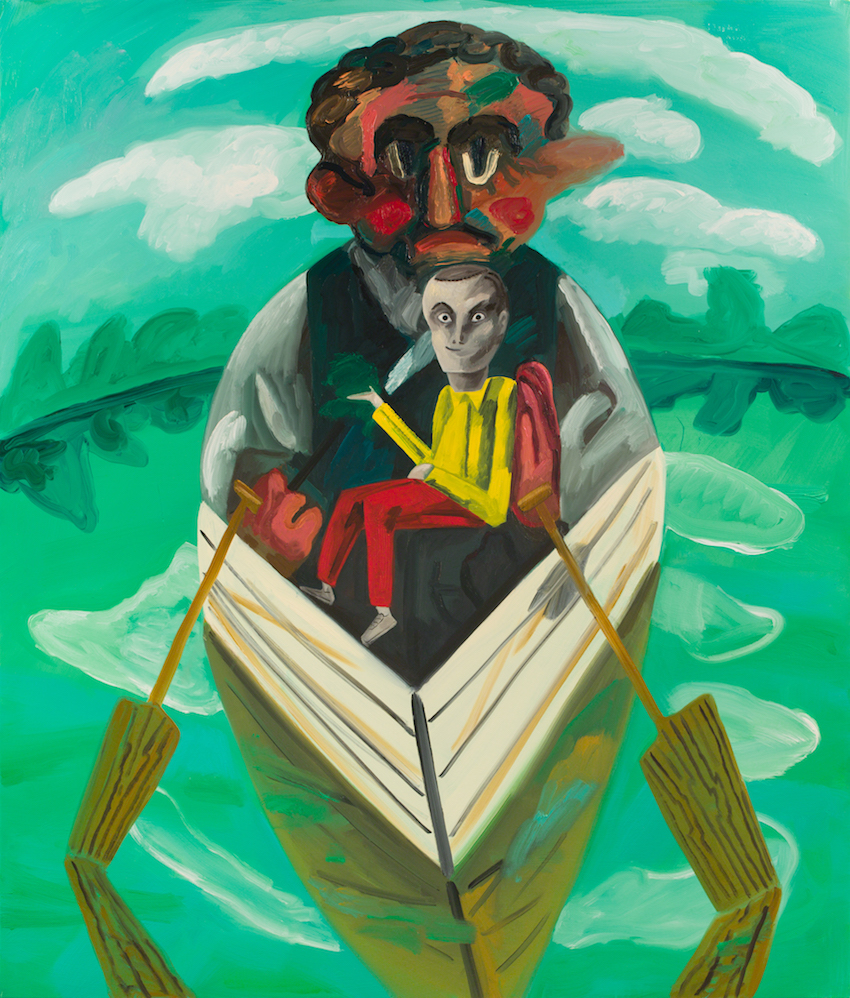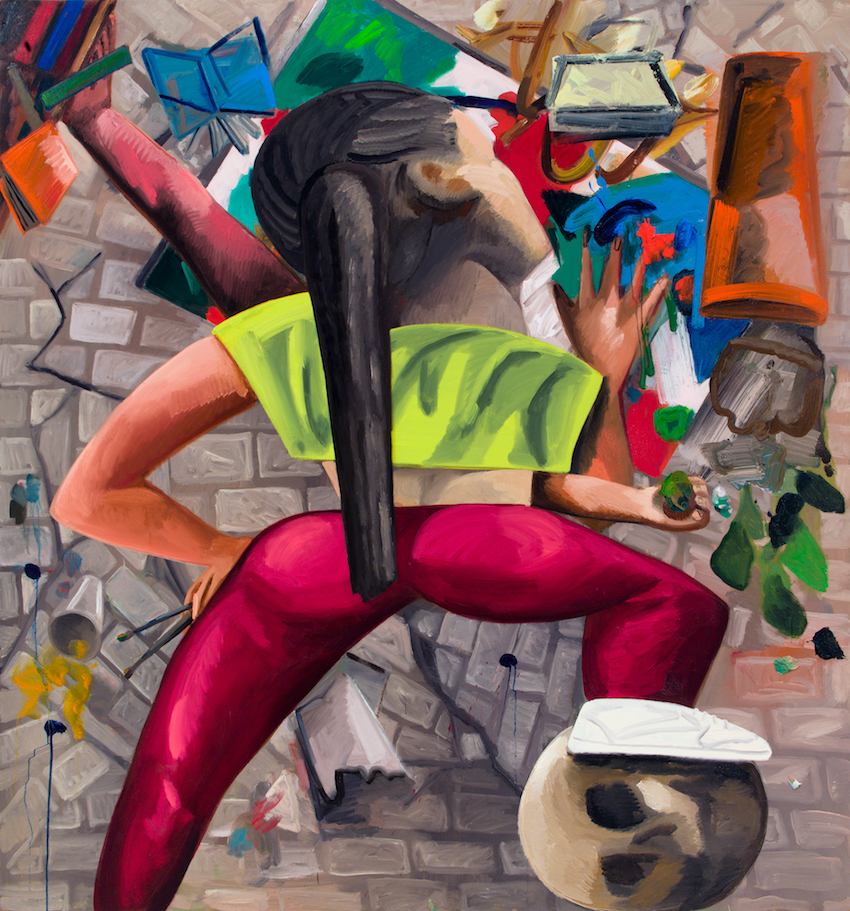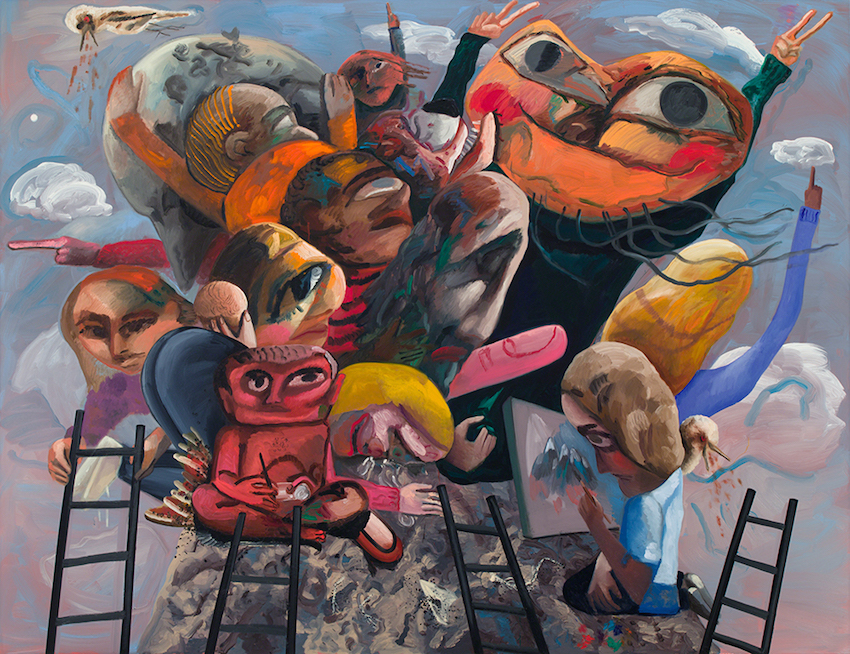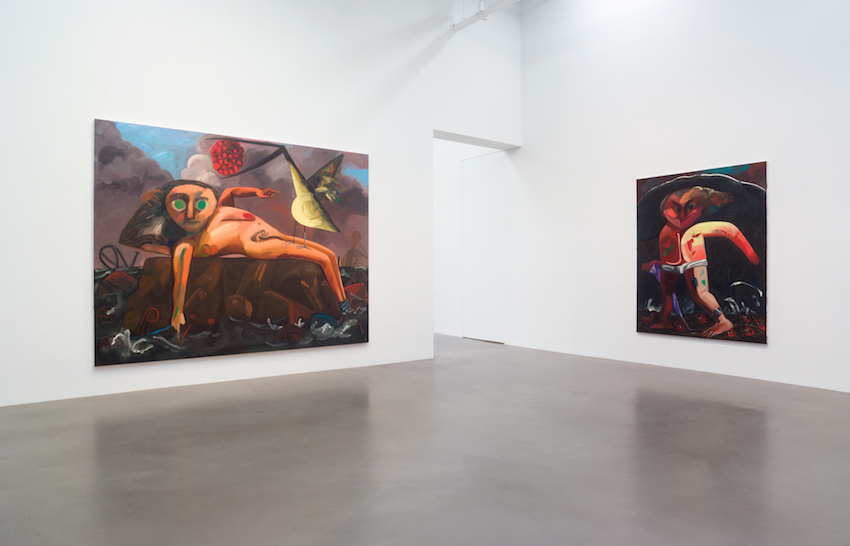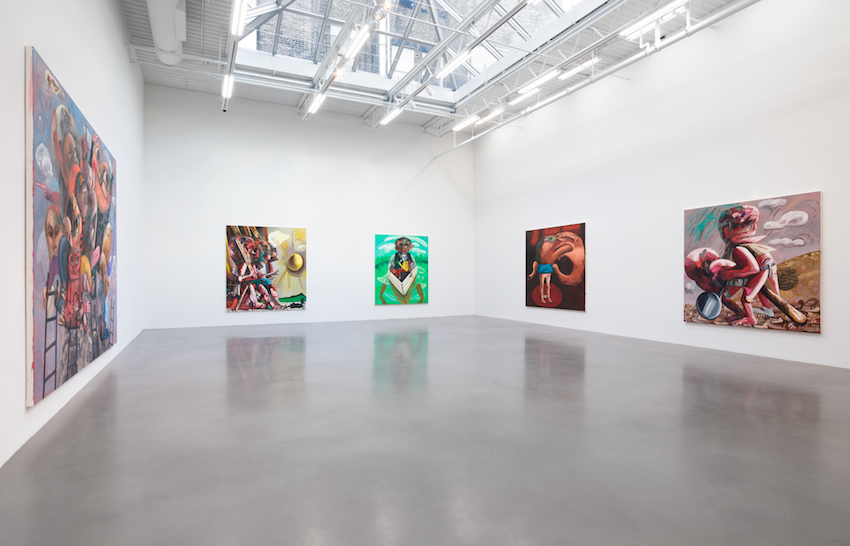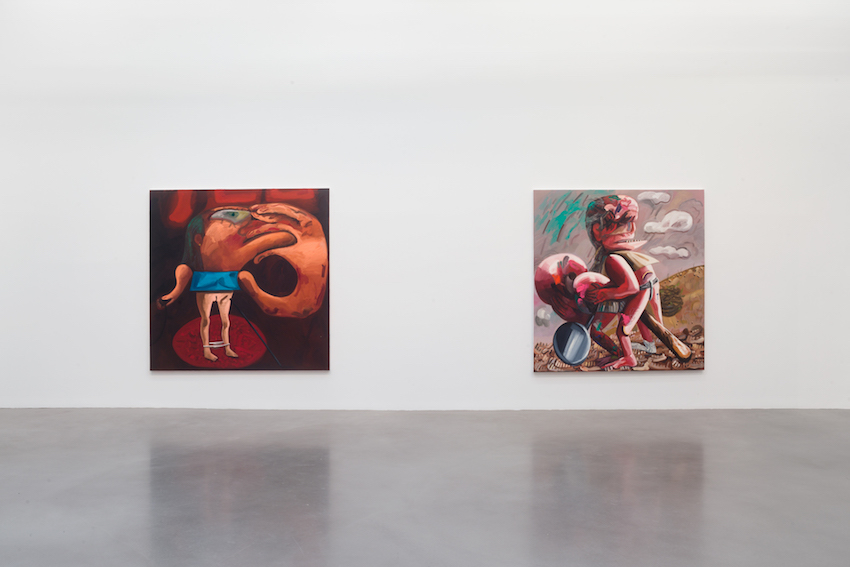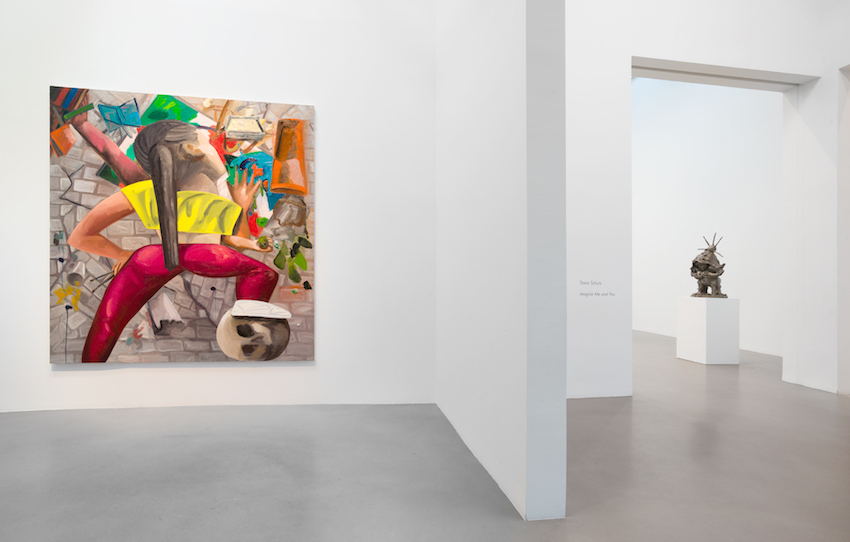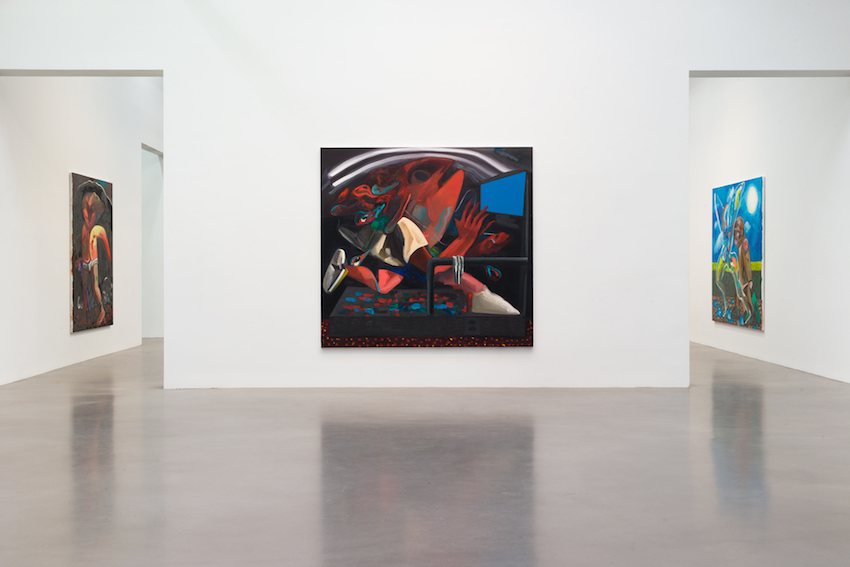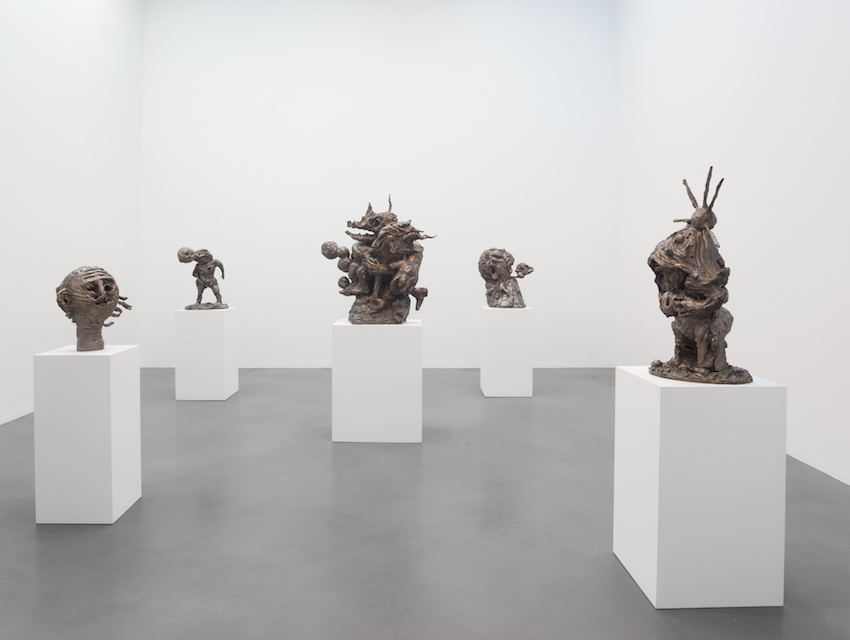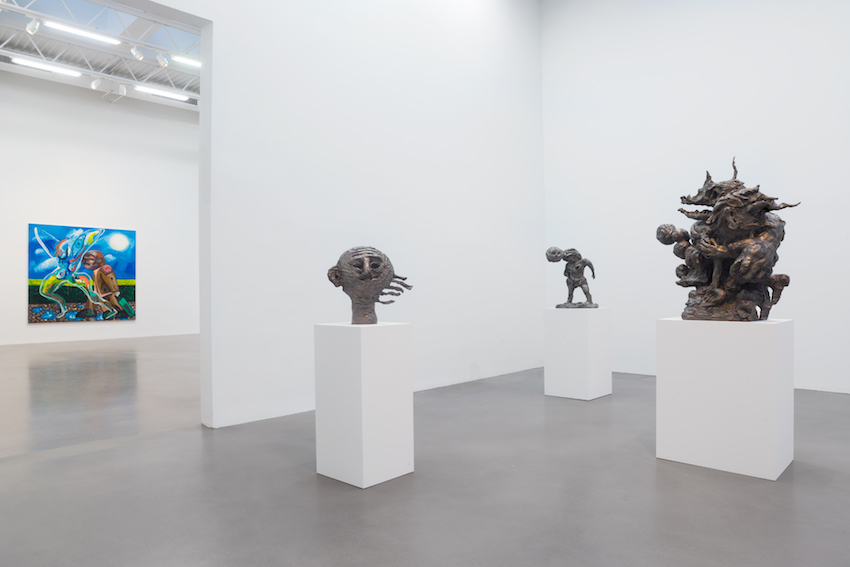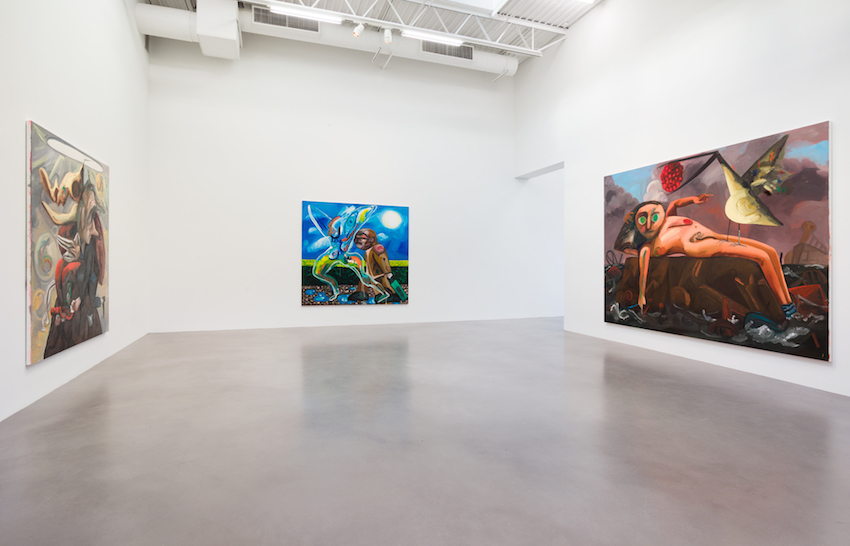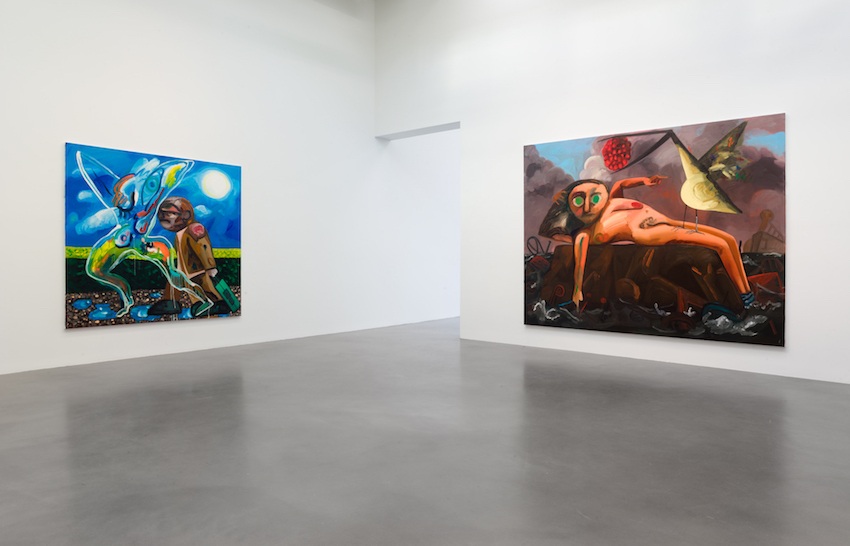The exhibition Imagine Me And You at Petzel Gallery marks the first Dana Schutz exhibition to include sculptures. These clunky bronzes are cast from clay sculpture that are based on preliminary charcoal studies. The clumpy surface has all the evidence of her process, with visible gouges from her thumbs and fingers smushing the clay. Like her paintings, these three-dimensional objects are constructed through an accumulation of rough mark making.
Since the 90’s, Dana Schutz has used thick impasto and vivid color to paint distorted figurative narratives. In this way, her work straddles the line between the representational and the abstract. She has said, “I’m interested in how something feels, rather than how it looks.” Her use of goey paint applied gesturally leads the viewer to become engaged with the aspects of making. The acknowledgement of this physicality primes the viewer to more deeply experience the visceral situations conveyed in her narratives.
Sculptural paint alone cannot stir empathy, while the illusion of representation is often not enough to trigger a sense of physical presence. Few have mastered this visceral empathic combo in painting. It is mostly a short list of male painters from the past who have achieved this—Soutine, Ensor, and Bacon to name a few. Their works are often described as muscley or with other terms peppered with machismo. Schutz adds a new spin to this tradition, bringing a sensitivity that is perhaps motherly. With a magic level of artistry, Schutz deeply considers her subjects, and intentionally distorts their physical proportions and colors while encapsulating them in a womb-like compressed space, reflecting the internal and external manifestations of her subjects’ turbulent emotions. The entire composition including and surrounding the figure -- ground, sky, and plants -- come alive with feeling.

Through her various series, Schutz has been searching for narrative structure to apply to this system. It is no wonder she appropriated the challenging narrative of Emmett Till in his open casket. Using her signature thick abstract paint, Schutz translated the tragedy without the explicit disturbing details of flesh wounds. Although it was rightly questioned if this historic event was one that she was entitled to explore, society likely benefited from the conversation and the perspectives heard. —David Molesky

